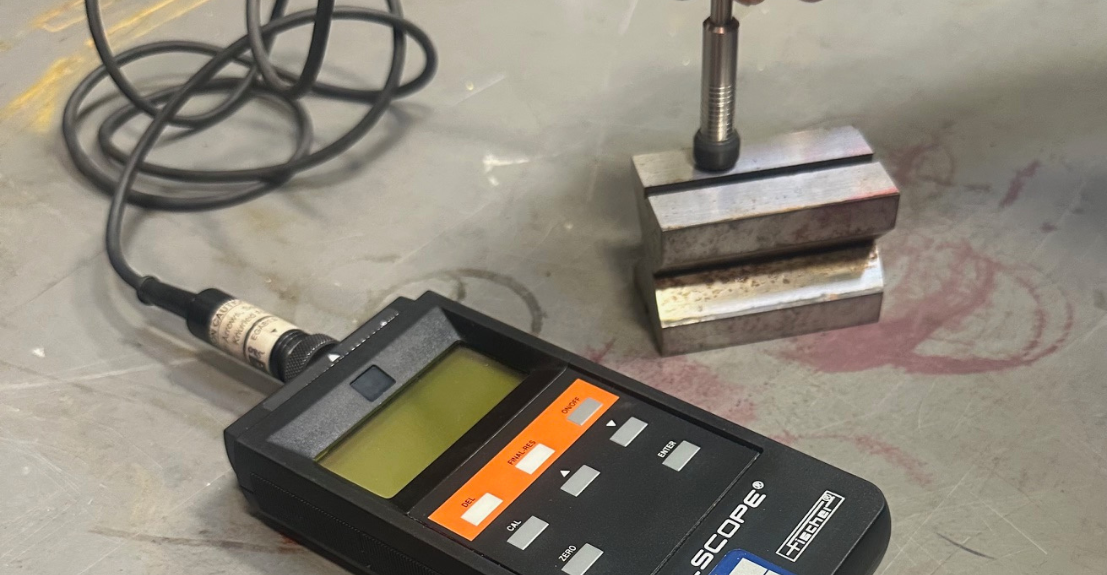
Hardness Testing
Measuring Material Strength & Durability
Hardness is defined as a material’s resistance to deformation. Hardness testing evaluates this property by applying a fixed load to a sample and measuring the depth of penetration. The smaller the indentation, the harder the material. There are over 12 different hardness testing methods, each suited for specific materials and applications.
Why Perform a Hardness Test?
Hardness testing is a quick, cost-effective, and non-destructive method to assess material properties. It is widely used in quality control, industrial production, and research & development to:
- dummyVerify heat treatment effectiveness
- dummyDetermine if a material meets design specifications
- dummyEnsure consistent material quality for manufacturing
- dummyTest finished parts without damaging them
- dummyEvaluate virtually any material, regardless of size or shape
Common Hardness Testing Methods
1. Brinell Hardness Test
- Developed in Sweden (1900) by Dr. J.A. Brinell, this method is ideal for large parts, forgings, and castings with coarse grain structures.
- Uses a hardened steel or carbide ball (5mm or 10mm) and applies a test force between 500 to 3000 kg.
- The indentation left by the ball is measured optically, and the hardness is calculated based on the force applied and the size of the indent.
- Test Standards: ASTM E10, ISO 6506.
Advantages:
- dummyOne scale covers a wide range of hardness values.
- dummyVersatile – Works for almost all metals by adjusting the test force and ball size.
- dummyNon-destructive – The sample remains intact for further testing.
Limitations:
- dummyRequires optical measurement, meaning the test surface must be well-prepared.
- dummySlower compared to other methods (30+ seconds per test).
2. Rockwell Hardness Test (HR)
- Invented by Stanley P. Rockwell, this test was designed for fast and reliable hardness measurement.
- Uses two loads – a minor load (to seat the indenter) and a major load (to measure hardness).
- Can use diamond cones or steel ball indenters, depending on the material being tested.
- Commonly used for metals, plastics, and composites.
- Test Standards: ASTM E18 (Metals), ISO 6508 (Metals), ASTM D785 (Plastics).
Rockwell Testing Types:
- Regular Rockwell – Minor load 10 kg, major load 60, 100, or 150 kg.
- Superficial Rockwell – Minor load 3 kg, major load 15, 30, or 45 kg (used for thin materials).
- Uses 30 different scales, with Rockwell C (HRC) and Rockwell B (HRB) being the most common.
Advantages:
- dummyFast & efficient – Immediate results.
- dummyMinimal surface preparation required.
- dummyCan test a wide variety of materials – metals, alloys, plastics.
- dummyMore practical for small or thin parts compared to Brinell testing.
Limitations:
- dummySelecting the correct scale is critical – Improper selection can lead to inaccurate results.
- dummyDifferent indenters and loads require careful calibration.
Choosing the Right Hardness Test
Brinell vs. Rockwell – Which One to Use?
Factor | Brinell Hardness Test (HB) | Rockwell Hardness Test (HR) |
|---|---|---|
Best For | Large parts, castings, forgings | Small parts, thin materials, precise applications |
Test Speed | Slower (30+ seconds) | Fast (Instant results) |
Indenter Type | Hardened steel/carbide ball | Diamond cone or steel ball |
Measurement | Optical (indent size) | Direct dial reading |
Standards | ASTM E10, ISO 6506 | ASTM E18, ISO 6508 |
Still Unsure?
- dummyIf testing large, coarse materials, choose Brinell.
- dummyIf testing small, precision components, go with Rockwell.
- dummyIf the material is thin or coated, consider Superficial Rockwell.
Your Trusted Partner in Hardness Testing
At Certified Testing Systems (CTS), we provide comprehensive hardness testing services tailored to your needs. Whether you need Brinell, Rockwell, or other specialized hardness tests, we ensure accurate, reliable results for your industrial and manufacturing applications.
Contact us today to discuss your hardness testing needs!
Email Us | Call Us @ 519-575-0494


